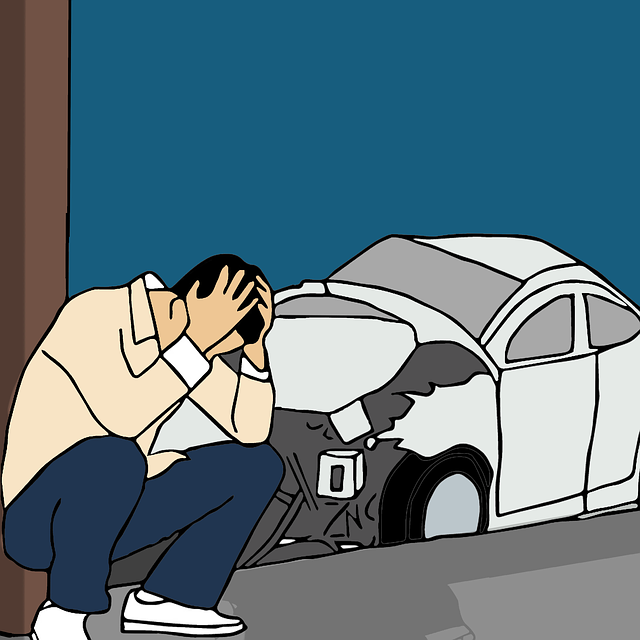To choose the best car insurance policy, start by evaluating your vehicle type, driving history, and personal circumstances. Consider age, occupation, and daily usage patterns. A clean driving record generally leads to better rates, while accidents increase premiums. Assess various coverage options like liability, collision, comprehensive, and PIP. Compare insurers, their policies, and offerings, focusing on coverage limits, deductibles, perks, and discounts. Review terms and conditions carefully. Understand how your driving history impacts costs. Consider the age, make, model, and safety features of your vehicle. Balance risk and financial responsibility when choosing a deductible. Evaluate additional perks offered by each provider. Gather quotes from multiple insurers and compare policies. Regularly review your policy to optimize coverage and potentially reduce premiums.
Choosing the best car insurance policy can seem daunting, but understanding your needs is key. This guide will help you navigate the process by exploring essential factors like evaluating different insurers and their policies, driving history’s impact on premiums, and how various deductibles affect costs.
Learn tips for negotiating rates and discover additional policy perks to ensure comprehensive coverage tailored to your unique situation. Master these steps, and you’ll be well on your way to selecting the ideal car insurance policy.
Understanding Your Needs: What to Consider Before Buying Insurance

Before diving into the world of car insurance, it’s crucial to understand your individual needs and circumstances. This involves a careful evaluation of several factors that will shape your decision-making process when choosing the best car insurance policy for you. Firstly, consider the type of vehicle you own; different cars come with varying levels of risk and cost implications. Additionally, evaluate your driving history and experience; a clean record often translates to better rates, while accidents or violations may increase premiums significantly.
Furthermore, assess your personal circumstances like age, occupation, and daily usage patterns. Young drivers might face higher costs due to their inexperience, while professionals with long commutes could require specific coverage options. Understanding these factors will enable you to make informed choices, ensuring that your car insurance policy aligns perfectly with your unique needs, thus offering the right balance of protection and affordability.
Types of Car Insurance Coverage Options Explained

When it comes to choosing the best car insurance policy, understanding your coverage options is crucial. Different types of car insurance cater to various needs and budgets. Comprehensive coverage protects against all risks except for wear and tear or acts of nature, ideal for those wanting complete peace of mind. Collision insurance, on the other hand, covers damages resulting from accidents, but does not include losses due to weather or vandalism.
Liability insurance is a legal requirement in most places and shields you from financial loss if you cause damage to others’ property or injuries to them during an accident. Uninsured/Underinsured Motorist coverage offers protection if the other driver is at fault but lacks adequate insurance. Personal Injury Protection (PIP) covers medical expenses for you and your passengers, while Medical Payments coverage assists with treatment costs even if liability isn’t established.
Evaluating Different Insurers and Their Policies

When searching for the best car insurance policy, evaluating different insurers and their offerings is a crucial step. Start by comparing well-known insurance companies in your area, considering their reputation and customer reviews. Look into various policy types they offer, such as liability, collision, comprehensive, and personal injury protection (PIP), to determine which best aligns with your needs. Pay attention to coverage limits, deductibles, and any additional perks or discounts each provider offers.
Assess the terms and conditions of each policy carefully. Understand what is covered, exclusions, and any potential hidden costs. Check if the insurer provides a clear claims process and has adequate customer support. Online tools and quote generators can be useful for a preliminary comparison, but don’t overlook personalized advice from agents who can offer tailored recommendations based on your unique circumstances.
The Impact of Your Driving History on Insurance Premiums

Your driving history plays a significant role in determining your car insurance premiums, which is an essential aspect to consider when choosing the best policy for you. Insurance companies carefully evaluate factors such as the number of accidents or claims you’ve had, moving violations like speeding tickets or DUIs, and your overall driving record length. A clean driving record typically translates to lower premiums, as it signifies a safer driver. Conversely, a history of accidents or traffic infractions may result in higher costs due to the increased risk associated with insuring these drivers.
When shopping for car insurance, understanding how your driving history impacts rates can empower you to make informed decisions. Maintaining a safe driving record through responsible behavior and adhering to traffic rules can help keep premiums manageable. If you’ve had previous issues, be transparent during the application process, as lying or omitting details may void your coverage. Many insurance providers offer opportunities for policyholders to improve their rates by demonstrating improved driving habits over time.
Factors Affecting the Cost of Your Car Insurance Premium

When considering how to choose the best car insurance policy, understanding the factors affecting your premium is key. One of the primary influences is your driving history and record. A clean driving record typically translates to lower premiums as it indicates a safer driver. Conversely, tickets, accidents, or claims can significantly drive up costs due to perceived higher risk.
Additionally, the type of vehicle you own plays a role. Insurance companies consider factors like age, make, model, and safety features of your car when calculating premiums. Newer, high-end vehicles often come with higher insurance costs because they are more expensive to replace or repair. Conversely, older or economically priced cars may have lower premiums. Remember, responsible driving habits and owning a well-maintained vehicle can contribute to saving money on your car insurance policy.
Benefits and Limitations of Various Insurance Deductibles

When considering how to choose the best car insurance policy, understanding the implications of different deductibles is key. Deductibles represent the amount you pay out-of-pocket before your insurance kicks in, essentially serving as a financial buffer between you and potential repair costs following an accident. Lower deductibles come with higher premiums, offering more comprehensive coverage but requiring larger upfront payments for claims. Conversely, higher deductibles are paired with lower premiums, allowing you to save on costs but expecting you to contribute more towards repairs from your pocket.
The choice between these options boils down to balancing risk and financial responsibility. Opting for a lower deductible provides peace of mind knowing that insurance will cover a larger portion of unexpected repair bills, yet it increases the overall cost of your policy. On the other hand, choosing a higher deductible can substantially reduce premium expenses while encouraging thoughtful driving habits and responsible claims management since you’ll be directly accountable for a larger share of smaller repairs.
Additional Policy Perks and What They Entail

When comparing car insurance policies, one crucial aspect often overlooked is the additional perks offered by each provider. These extras can significantly impact your overall experience and protection as a policyholder. From roadside assistance to rental car coverage, understanding what’s included in your policy can help you make an informed decision on how to choose the best car insurance.
Each of these perks has its own set of benefits and limitations. For instance, roadside assistance programs typically include services like towing, battery boosts, tire changes, and even lockouts. This is a valuable addition for drivers who frequently face unexpected breakdowns or need quick help during emergencies on the road. Similarly, rental car coverage ensures that if your insured vehicle is damaged beyond repair or stolen, you’ll have access to a replacement while repairs are being made, reducing the financial burden and hassle of arranging alternative transportation.
Tips for Negotiating Better Rates with Your Insurance Provider

When negotiating with your insurance provider, start by gathering quotes from multiple companies. This gives you leverage and a good understanding of market rates. Compare policies based on coverage limits, deductibles, and additional benefits to identify areas where you can haggle. For instance, if you have a clean driving record, you might secure a better rate by asking for a discount on safe driver programs.
During negotiations, be well-informed about your state’s legal minimums and consider opting for higher liability limits than required. This strategic move demonstrates responsible risk management and could result in substantial savings. Also, review your policy at least once a year to ensure it aligns with your current needs and driving habits. Regular reassessments open opportunities to optimize your coverage and potentially reduce premiums.
